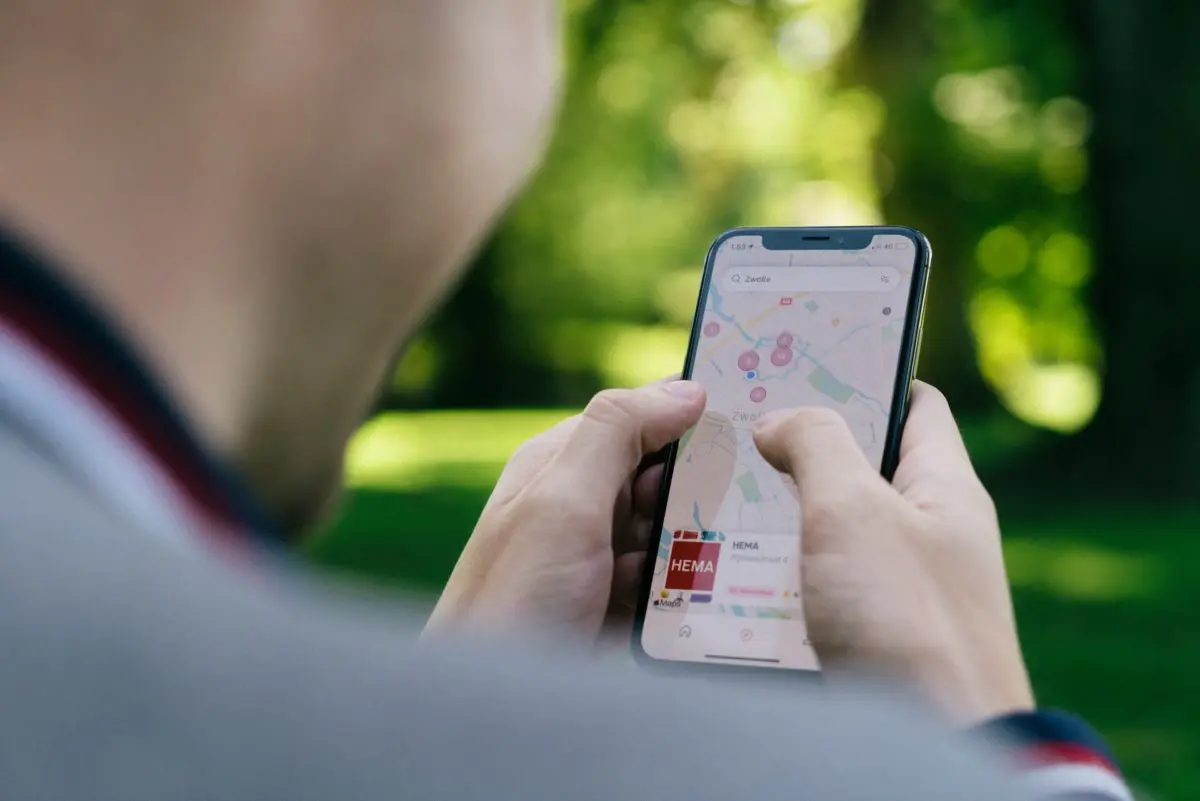Imagine the frustration of entering a store with no clear signage, disorganized shelves, and no staff to guide you. How long would you stay? The same applies to website navigation.
Nowadays, conducting consistent and successful marketing is not easy. Customers grow tired of being constantly bombarded with advertisements, which influences their purchasing decisions. In this article you will learn how to make your business stand out from the competition and make use of marketing integrations.
What are marketing integrations?
Marketing integrations are an inseparable part of integrated marketing. This type of business promotion consists of standardizing all aspects of marketing communication, i.e. advertising, PR, social media channels, website, etc. The idea is to create such a combination of promotional activities that will be implemented not on one platform, but on many to ensure the smooth development of the company and a steady stream of returning and new customers. In short, marketing integration allows you to develop all your advertising channels in a cohesive, purposeful and consistent tone.
Differences between integrated and omnichannel marketing
Many people confuse these two types of marketing. Both of them involve the use of multiple platforms to promote a product or service, but have a slightly different purpose. Omnichannel marketing was created to make the interaction at the client-company level easier with the use of communication channels located in various places – which makes it focused mainly on the customer experience.
Integrated marketing, on the other hand, prioritizes making the message uniform and coherent. For example, all ads in social media should have the same tone as TV ads, they should reach the same type of client and be easy to recognize from a distance. Of course, incorporating both types of marketing, if possible, can be highly beneficial – it would not be logical to lose any of the opportunity to reach new customers.

Marketing integration benefits
The introduction of marketing integration has many advantages. First of all, you will get better results for your promotional activities as you combine different tools and messages.
Remember, that consistent marketing is always more effective. The more purposeful and focused on a specific issue the customer’s journey is, the more likely they are to follow your path and make a purchase. Such refined and consistent shopping paths make current customers more loyal and likely to come back or recommend the brand to others. Learn more from our article on brand consistency.
The second very big advantage when it comes to marketing integration is building a strong brand awareness, which in the eyes of potential clients seems consistent and trustworthy. In addition, repetitive messages – but not versed in the same way – are great means to perpetuate your brand in the minds of the buyers, who will remember your services or products when they need them. That’s why it’s also worth finding time to generate such consumer needs. Well-integrated marketing channels can help you save a lot of money. By focusing on a consistent marketing message, marketing teams don’t waste their budgets on ill-considered campaigns or test marketing efforts.
How to create a marketing integration strategy?
Would you like to integrate all communication channels? You need to plan this process well. Creating a strategy that will guide your marketing department and sales teams step by step through the meanders of the marketing world is not an easy task.
You need to understand that integrated marketing is not only about displaying the same or similar advertisements on different websites and using the available tools to track consumer behavior. It’s constant monitoring of all platforms you operate on, regular contact with your audience, well structured message and making sure that all your actions are based on a story that’s easy to embrace and evokes emotions in your clients.
Analyze customer data and unravel users’ expectations
Combining customer data with your marketing strategies can lead to a tailored customer experiences. Customized marketing campaigns can strengthen customer loyalty and drive revenue. Think about what your customers expect before you start building specific messages. Analyze their needs, expectations, frustrations, potential, everyday problems and then use that knowledge to plan your marketing efforts.
Create action scenarios and choose the best one
Create different scenarios of the story you want to present to your customers. Think about what distinguishes you on the market, how your activities in the industry started, how the company’s development has looked over the years. Use the 6 hats method, and then choose the communication scenario that will not only convince you, but most of all will convince potential buyers.
Define company’s values and mission
A convincing idea is not enough. You have to define your brand’s values and its ultimate mission. The company’s goals and values may be different, e.g. attractive prices, filling a market gap, niche design, etc. Once you have chosen your brand’s mission, confront your storytelling idea with it and see if it’s consistent with the previously specified values. This step is very important to help your business grow.
Make use of marketing tools and platforms
Use different platforms and tools to your advantage. Currently, marketers have a much simpler task than a dozen or so years ago. There are platforms for data analytics, designing marketing strategies and market monitoring available to anyone who wants to buy them. Use every opportunity to further develop your brand!
If you operate an online store, ecommerce integrations can be an effective method to get more sales from existing customers and attract new leads. Integrating an ecommerce platform with marketing automation software can help you automate your email marketing campaigns and track the performance of different marketing campaigns. Among the most popular ecommerce integrations is connecting an online store to an email marketing platform by creating automated emails for abandoned shopping carts.

How to implement marketing integration?
Now that you have all the most important issues settled, it’s time to introduce marketing integrations in your company’s promotional activities.
Create a customer journey maps to improve your marketing strategy
First of all, create customer journey maps for each selected target group and prepare materials that will be in accordance with the adopted assumptions. Remember that it’s extremely important to tailor messages to a specific target audience, their needs, interests, preferences and demographic data. Your brand’s messages must be consistent and convey the right message. Only then will they work properly.

Use marketing tech stack to integrate message channels
Managing campaigns on multiple websites is a necessity that causes a lot of difficulties for many marketers. Use the available marketing platform integration, which will allow you to handle various channels from one system – social media integrations, email marketing campaigns, Google Ads, Facebook advertising, etc.
How email marketing and social media can be integrated? You can use social media posts to promote your email campaigns and encourage followers to sign up for an email list. Some marketers use email marketing data to retarget customers on social media platforms.
Analyze and track the performance of your marketing efforts
The last point is to constantly analyze and track the performance of your activities in Google Analytics and other marketing tools. This is especially important at the beginning of the journey, when you have to be switched on and see which solutions work and which need to be modified or completely changed.
Third-party marketing integrations can give a business a sustainable competitive advantage by providing advanced data analytics. Combining different marketing tools and platforms enables business to consolidate customer data from multiple sources and use it to improve the targeting and personalization of advertising campaigns. By measuring the performance of your online campaigns, conversion tracking and gathering important data about how desktop and mobile visitors interact with your site, you can acquire actionable insights that can be used to enhance your website.
What are website integrations?
It’s impossible not to discuss the concept of third party integration when talking about marketing integrations, otherwise known as connecting a software to an external applications or tools, developed by other companies. Such an integration allows you to automatically connect your website to third party applications, such as CRM, analytics tools or other marketing software.
Third party integration consists of adding the necessary external data to an existing project using various APIs (Application Programming Interface). Thanks to them, third-party companies, or rather their app developers, are able to build solutions tailored to a given brand in a much shorter time than if anyone were to do it from scratch.
How does this process work? They make use of the existing components instead of creating code for the new ones. For example, if you create an application for ordering food online, you will probably need a place there to display the menu with the option of adding a specific option to the basket. There’s no point in creating something that already exists. Developers can use an available interface of this type and integrate it with your website. This will help you save time and money.
Uber is one of the applications that were made using this method. It uses Google Maps for navigation, Braintree for payment operations and Twilio as a chat. In the same way as applications, you can of course perform website and ecommerce integrations.

Advantages of using website integration
What are the main benefits of using website integrations and applications via APIs? The first huge advantage is the aforementioned faster creation of a given website or application. Coding the web space from scratch takes long months of programmers’ work. In the case of third party integrations, it takes several days to set up a new page. Therefore, the time saved can be devoted to the development of other marketing branches. The lowering of the costs is the second advantage. Many months of work by web developers who code from scratch the entire application or website is a very large expense.
On the other hand, the cost of a work hour of programmers who carry out 3rd party integration activities is lower. In addition, they can finish their work much faster, over the course of several days. The last point worth mentioning is that by choosing solutions that have already worked somewhere, you minimize the risk factor. If programmers use APIs that work very well for other entities running a business similar to yours, you can be sure that the whole thing will also work for you.
Disadvantages of using third party integrations
Of course, you have to bear in mind that, like any other solution, the use of third party integrations has its drawbacks. This is a very tempting option because it allows you to create a safe and cheap design that will be consistent with your brand vision and based on already operating systems in the industry. It’s important that you consider the risks of using this solution.
Chaotic structure
If you use different API providers and have different agreements, including service level, after some time in the market, you may find that the structure of your application has become chaotic because of service level differences offered by each provider.
Additional financial investments
You also need to know that it may turn out that it will be necessary to invest in a website or application a bit more. Sometimes providers decide to change the API or data policy, which makes some of the previously available features stop working. A new supplier has to be found to replace the old one if such a situation occurs. Of course, these costs are still not as high as those associated with writing code from scratch.
Lack of full control over the quality of services
One thing that puts a lot of people off is that they cannot control every aspect of functionality. You can only wait when something crashes in the interface – the provider has to fix the error. How to avoid this kind of situation? Choose only recommended vendors who are known to have a short response time. You’ll save yourself some stress.

Inability to modify the interface
The last drawback is that you cannot adjust the interface strictly to your and your customers’ needs. You have to accept what the provider is offering, and you have no right to expect them to change anything just because you need it. Currently, however, the choice of vendors and specific APIs is so huge that you will surely find one that will completely meet your expectations. Bet on solutions that work for specific companies in your industry or those that you have tested and are familiar with. Only then you will surely be satisfied with the end result.
Is it worth hiring a company that will do website integration for you?
If you feel that your programmers will not cope with this task or you do not have a team of web developers, choose an external company that will handle this task for you. Third party integration services are provided by many entities, but it’s worth choosing one that has already successfully completed projects in that area. However, you must remember to carefully discuss your expectations with the selected company. When signing the contract, ask about:
- Service costs. The more custom integration you request, the more you will have to pay in the end not only to the suppliers, but also to the external developer resources, but it’s worth knowing the hourly rates of a given team.
- How will integrating CRM with website work and how long will it take?
- In addition to creating a website or application, will the company also offer comprehensive tests or will it be necessary to hire qualified testers?
- How is the plan for constant supervision of the platform presented and what additional costs are associated with it?
- How long will the entire process of implementation, testing and final commissioning of the website or application take?
Are you looking for a company to offer you custom web development services and integrate marketing software? Use our services! However, before you come to us, check our projects, which will surely convince you that it’s a good decision to trust us: Pardot integration, third parties integrations (HubSpot and Analytics platforms).






